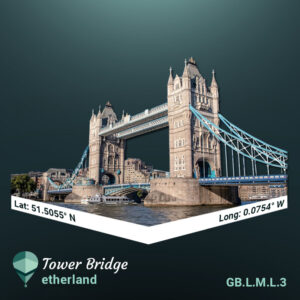 Crossing the River Thames, the Tower Bridge is the definition of a London Icon. The bridge, and its 65 meters tall Victorian Gothic towers, was built in 1886 to relieve the people from the miles long journey then needed to cross the river. As of today, it keeps easing transportation in the busy city and even provides tourists with a spectacular experience to witness, the Bridge Lift.
Crossing the River Thames, the Tower Bridge is the definition of a London Icon. The bridge, and its 65 meters tall Victorian Gothic towers, was built in 1886 to relieve the people from the miles long journey then needed to cross the river. As of today, it keeps easing transportation in the busy city and even provides tourists with a spectacular experience to witness, the Bridge Lift.
In total there are over 200 bridges over the River Thames in England, but the ones which have captured the public imagination are those which cross the great river in central London, right at the heart of Britain’s business, political and cultural heartland. Few are as iconic as Tower Bridge, a movable, double-leaf bascule-type (drawbridge) bridge that spans the river between Tower Hamlets on the north bank and Southwark on the south of the river. On the north side, it abuts the Tower of London, the famed medieval prison and government armory, from which the bridge’s name is derived.
Traditionally traffic over the Thames in the city's center essentially went over London Bridge further upriver. Still, with the growth of London and its docklands in the nineteenth century, a new river crossing was needed near the East End. London was the busiest port in the world at the time. It stood at the center of a global empire that included all of India, Australia, New Zealand, Canada, and a growing number of colonies throughout Africa, from Egypt to South Africa. As such, it was decided that a bridge was needed which could be used for people and carriages to cross the river, but which could also be raised to allow ships to get past the bridge and continue on upriver to the heartland of London’s financial and political districts.
A committee was consequently formed in the 1870s, and a design by the famed British architect, Sir Horace Jones, was finally approved in 1884 from amongst over 50 different proposals. It took ten years thereafter to realize Jones’s concept. Still, the new crossing was finally completed in 1894 at just over one million pounds or approximately £140 million in today’s money.
As well as being built in this way to facilitate ongoing commerce on the river, Tower Bridge is also possessed of considerably impressive architectural features. Two towers were built on the bridge, which rose to a height of over 200 feet above the River Thames. Lengthy walkways were also incorporated into the design at the centre of the bridge, however as they quickly became havens for prostitutes and thieves they were closed off in the early twentieth century and remained shut for over seventy years until they were re-opened in the 1980s.
The bridge has become an iconic landmark in modern-day London and its design features have been imitated in several others countries. Today, though, its bascules are opened only about 750 times per year, or an average of about two times per day, a long way away from the bridge’s early days at the end of the nineteenth century when the lever drawbridge was opened over 6,000 times per year, or an average of over sixteen times every day!